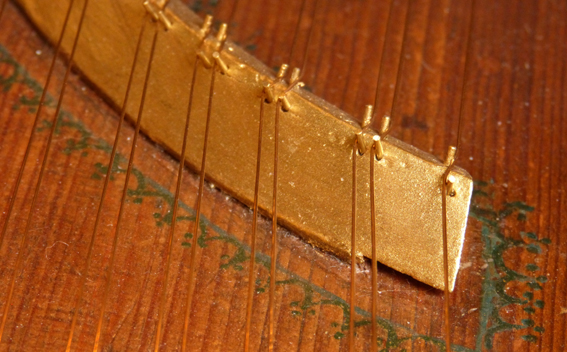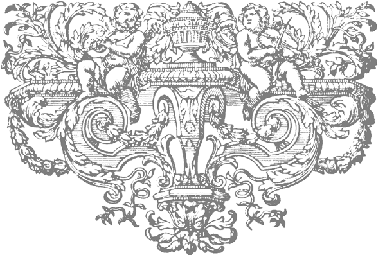A Franco-Flemish double-manual harpsichord,
![]()
The cutout in the extension to the bass end of the 8' bridge of the Franco-Flemish harpsichord
|
A Franco-Flemish double-manual harpsichord,
The cutout in the extension to the bass end of the 8' bridge of the Franco-Flemish harpsichord |

The bass end of the 8' bridge was extended (not seen in this photograph) and was cut away under the extreme end of the bridge as seen in this photograph. This enabled the strings for the bass notes to run more parallel to the spine so that the jacks and quills could operate correctly, but also freed up more soundboard area at the bass end of the bridge so that the soundboard could vibrate more readily there as well. This meant that the bass response of the soundboard (and therefore the bass sound of the instrument) was better than it would have been with no cutout. Also visible in the bridge are the plugged holes of a previous set of backpins that was used in an earlier, probably twentieth-century, state of the instrument. The cutout under the bridge had been filled-in by some unenlightened previous restorer, apparently unaware of Blanchet's desire to improve the sound of this instrument in this ingenious way.
The 8' bridge with this cutout is a feature of many instruments either wholly by François Étienne Blanchet, or given a ravalement by him. This cutout in the 8' bridge is one of a number of the idiosyncractic characteristics of Blanchet's work that have been used to ascribe the 1750 ravalement to him. The construction details of the jacks and the hand of the person who wrote the numbers on the jacks, and comparison of these with the same features on other instruments, indicates clearly that the ravalement was carried out by François Étienne Blanchet and that the date that of this ravalement was 1750.
This cutout, clearly intended by Blanchet to improve the bass sound of the instrument by making the bass area of the soundboard more flexible, was filled with a small block of wood almost certainly by Arnold Dolmetsch. The small Dolmetsch block was removed in the present restoration in accordance with Blanchet's clear intentions.
Return to the section on the eighteenth-century history of the Franco-Flemish harpsichord
Return to the section on the description of the Franco-Flemish harpsichord
